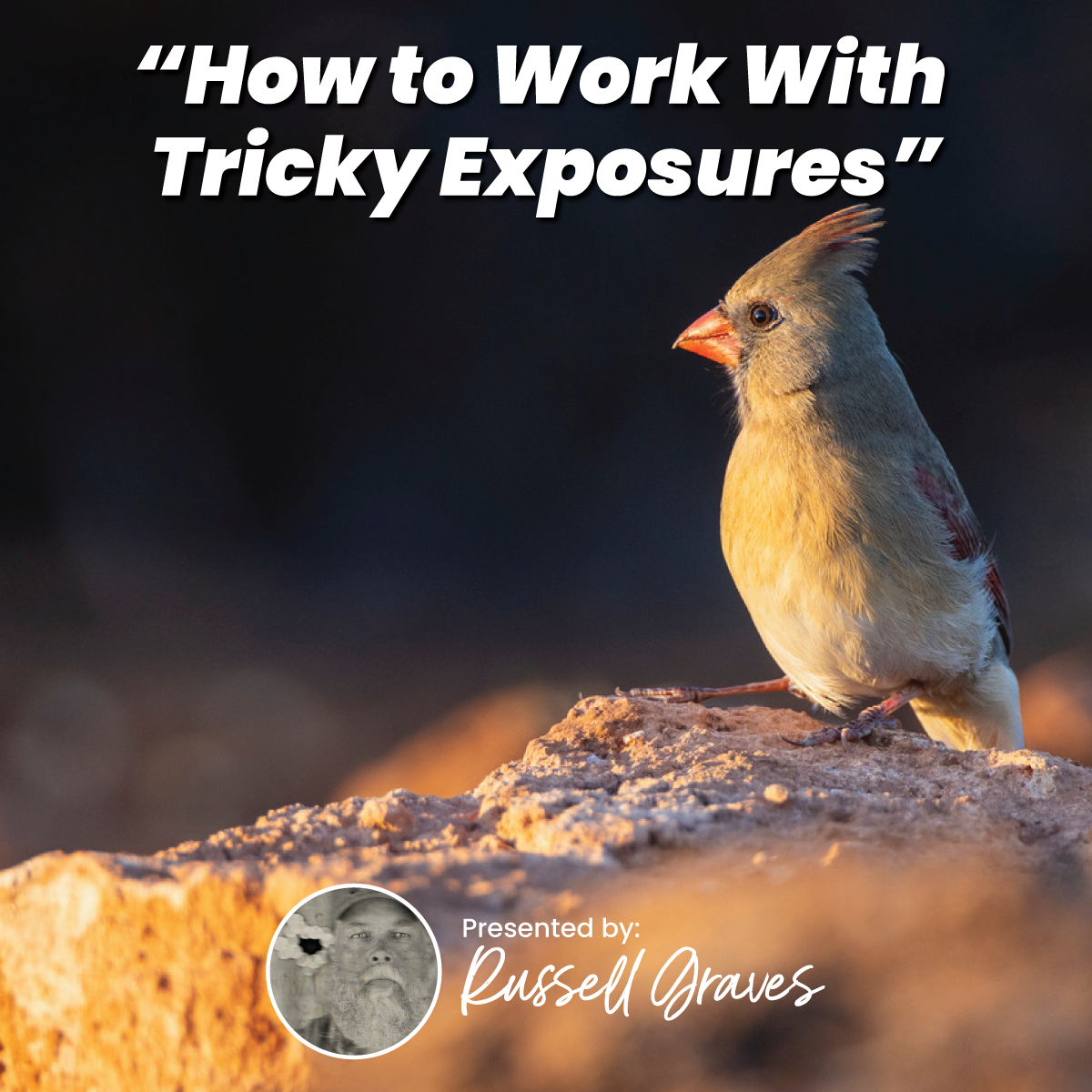How to Work With Tricky Exposures
Learn how to master exposure in challenging lighting conditions with wildlife photographer Russell Graves. This training covers real-world techniques for handling snow, shadows, backlight, and high-contrast scenes with confidence.
$19.99
Or unlock everything: Instead of just this one training, join the Journal of Wildlife Photography and get unlimited access to our entire training library, monthly photo contests with $500 prizes, expert critiques, our quarterly magazine, and a thriving social community. Select a membership below.
Exposure mistakes can ruin an otherwise perfect wildlife photo. Whether you’re shooting birds in flight, animals in snow, or backlit subjects at sunset—getting the exposure right is often harder than it looks.
In this exclusive member training, award-winning photographer Russell Graves shared practical tools for managing difficult lighting situations in the field. Based in Texas, Russell has spent decades photographing wildlife and teaching photographers how to handle real-world challenges—like harsh light, deep shadows, and extreme contrast.
If you’ve ever looked at the back of your camera and wondered why your image is too bright or too dark, this session is for you.
What You’ll Learn in the Training
This training focuses on understanding how your camera evaluates light—and how to adjust your exposure in tricky scenes to get consistent, accurate results.
Why Your Camera Gets Exposure Wrong
- Every camera is calibrated to interpret a scene as 18% gray.
- This works in neutral lighting but leads to problems in very bright or dark settings.
- Bright scenes (snow, sky, water) cause underexposure.
- Dark scenes (shadows, backlit animals, forests) cause overexposure.
Using Exposure Compensation Effectively
- Use exposure compensation to correct your camera’s mistakes.
- If the subject is too dark, add light (+1 EV or more).
- If the subject is too bright, subtract light (-1 EV or more).
- In most cases, adjusting by just one stop makes a noticeable difference.
Scene-Based Exposure Adjustments
- Snowy environments: Increase exposure (+1 to +2 EV) to avoid gray-looking snow.
- Dark subjects in shadows: Decrease exposure (-1 to -2 EV) to keep tones realistic.
- Backlit scenes: Slight underexposure helps preserve highlight detail.
- Birds against a bright sky: Add light (+EV) to keep the bird properly exposed.
Best Metering Modes for Wildlife
- Evaluative/Matrix metering works well in most situations.
- Spot metering is helpful when the subject is much lighter or darker than the background.
- Center-weighted metering can be useful for portraits or predictable subjects.
Why Getting It Right in Camera Saves Time
- Russell analyzed over 803,000 images in his Lightroom catalog.
- If he had to manually adjust exposure on all of them, it would’ve taken an extra 248 hours.
- Getting it right in the field saves time, energy, and reduces editing fatigue.
Who This Training Is For
This session is ideal for wildlife photographers who:
- Struggle with inconsistent exposures in challenging light.
- Frequently shoot in snow, forest, or bright-sky conditions.
- Want to rely less on post-processing for exposure correction.
- Use exposure compensation but aren’t confident with it yet.
- Want faster, more accurate exposure decisions in the field.
Real Feedback From Attendees
“Thank you for the Cheat Sheets! Awesome! Your presentation tonight made total sense. Now I just have to remember it!!”
– Sarah Skerker
“Loved it. Brisbane, Australia is very bright, so this was awesome.”
– Kay Comino
“Thanks again, Russell! Got some of them nuggets, too!”
– Eric Brown
“Great presentation. I have to run. Thank you!!!”
– Simone
“Thanks for another great presentation, Russell.”
– Rob Narwid
About the Presenter
Russell Graves is a professional wildlife and landscape photographer based in Texas. With over 30 years of experience, Russell is known for his clean compositions, storytelling approach, and deep understanding of light. He has been published in major outlets including Texas Highways, Field & Stream, and Outdoor Photographer.
Russell is a respected educator who frequently leads workshops, teaches online courses, and speaks at photography conferences. You can see more of his work and upcoming events at www.russellgraves.com.

